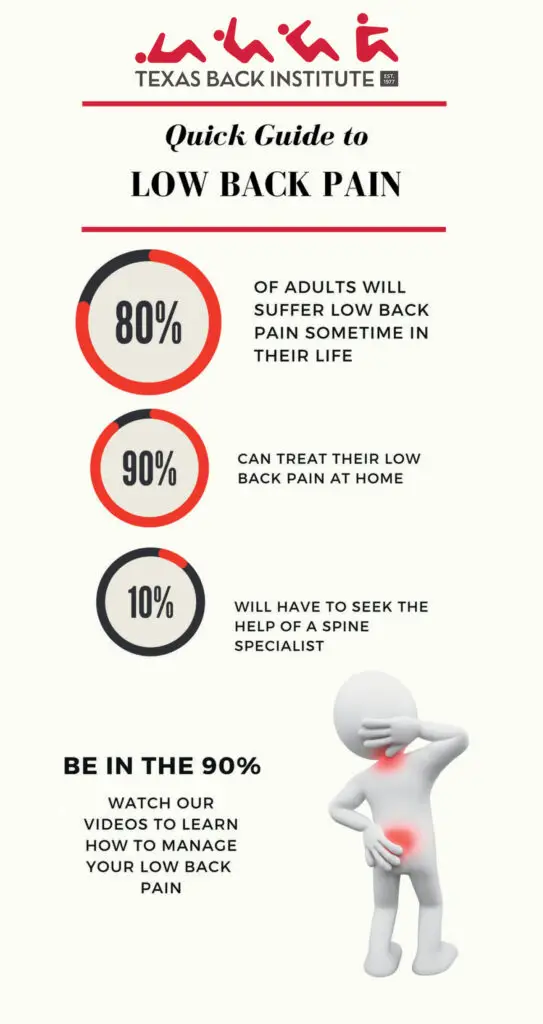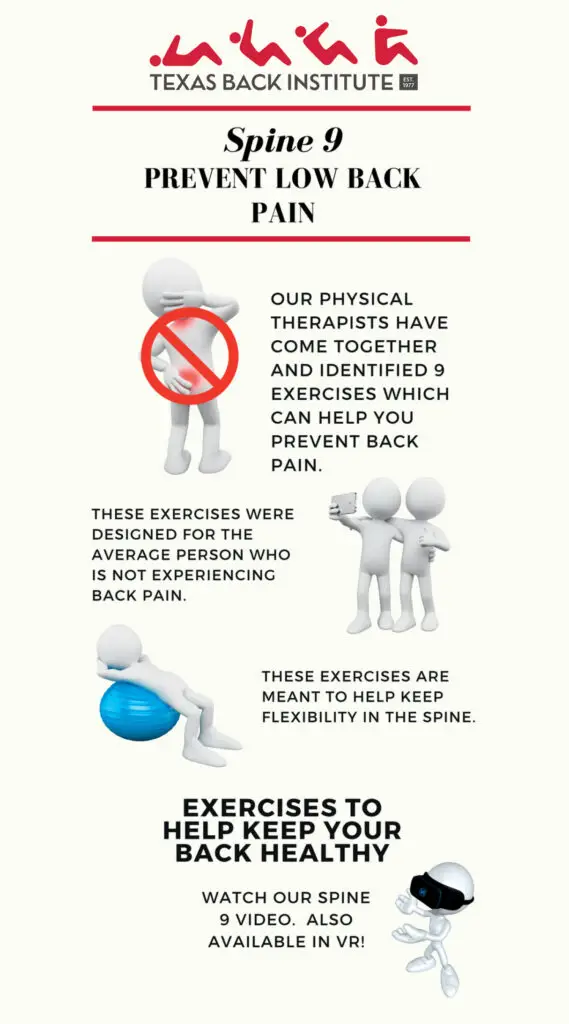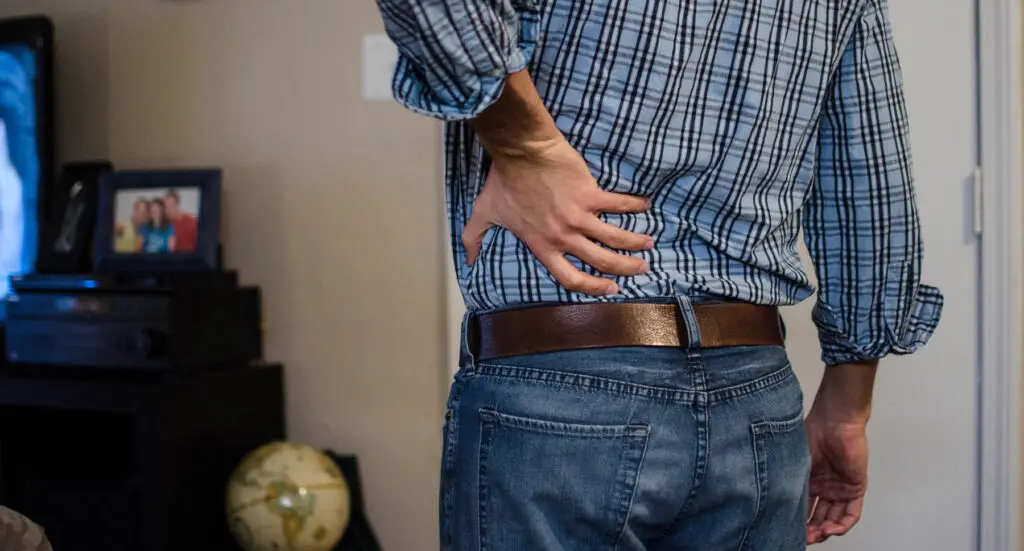All back pain is not the same. Some pain is easy to diagnose and can be managed at home. Other types are signs of serious health conditions that require medical attention to be treated. In some cases, pain is caused by a specific injury or medical condition. In other cases, the cause of the pain may be unknown. As the spine specialists at Texas Back Institute know, back pain should always be treated, whether at home, or by a spine specialist.

Acute vs. Chronic Pain
There’s a difference between acute and chronic pain. It relates to the duration of time and the cause of pain. Acute pain is usually sudden and is caused by something specific, such as an injury. Acute pain typically doesn’t last longer than six weeks and disappears when there is no longer an underlying cause.
Chronic pain is pain that is ongoing and lasts longer than three months. This type of pain may continue after the injury or illness that caused it has healed or gone away.
Acute and chronic lower back pain is so common that one-half of all working adults claim to have lower back pain symptoms every year. Risk factors for lower back pain include age, lack of exercise, weight, occupation, smoking, and genetics. Lower back pain is pain felt in the lumbar spine and may present as radiating muscle pain or as sharp, stabbing pain. Often, pain extends into the hips, buttocks, and legs. Lower back pain can be debilitating and may be a symptom of a variety of back-related illnesses or conditions.
If back pain can be linked to a specific activity, such as lifting or twisting wrong, and the pain goes away within 72 hours with rest and home care, it’s probably nothing to worry about. However, if pain gradually increases, is associated with numbness, tingling, or weakness in the extremities, or doesn’t go away, it might signal a more serious condition.
If you have concerns about acute or chronic back pain, a great place to start is to email us at info@texasback.com to get your questions answered.
The Treatment Approach
Acute back pain is often treated by focusing on the cause of the injury. Acute mechanical back pain may cause muscle spasms, and symptoms become worse with flexion of the back or heavy lifting. Acute non-specific low back pain rarely stems from a structural abnormality in the spine itself.
Treatment options often include physical therapy and lifestyle changes that support a healthy back. About 20 percent of people affected by acute low back pain develop chronic low back pain with persistent symptoms.

Chronic back pain can be linked to conditions like arthritis, persistent nerve root compression, or nerve root injury. The diagnostic work to determine the cause of the pain can include imaging with an MRI to evaluate for nerve compression or other abnormalities or dedicated nerve testing to evaluate which nerves are acting abnormally. Patients with these conditions may require injection treatment or surgical intervention.
When To Seek Professional Help
When an injury or a potentially serious symptom related to back pain occurs, an immediate decision must be made about when to seek professional help. If back pain indicates a medical emergency, such as trauma from a fall or an accident, an ER visit is recommended.
Other red flag symptoms that require immediate attention include a sudden loss of sensation, or numbness, in the legs or groin area, an inability to walk or stand, or an inability to control bowel movements.
Spine Health Awareness Month
Texas Back Institute reminds you that October was Spinal Health Awareness Month. This year, the theme is “Move Your Spine” (#MoveYourSpine) and aims to focus public awareness on the diverse nature of spinal pain and disability. Exercises focused on increasing strength and improving range of motion—as well as ensuring balance on both sides of the body—can make the back stronger and help to alleviate further episodes of pain.
Is back pain interfering with your quality of life? If the pain continues for more than a few weeks, contact the spine specialists at Texas Back Institute. Click here to schedule an appointment.
See also:
Spine Health Awareness Month Tip: The Most Common Causes of Lower Back Pain
Herniated Disc: One of the Most Common Injuries Causing Neck or Back Pain
Spine Health Awareness Month: 4 Important Advances in Spine Surgery


